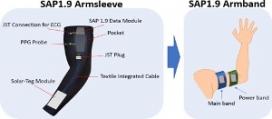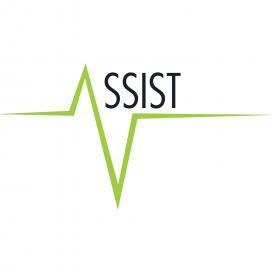ERC Tests New Design for Self-Powered, Wearable Cardiac Monitoring Device
The NSF-funded Engineering Research Center (ERC) for Advanced Self-Powered Systems of Integrated Sensors and Technologies (ASSIST), headquartered at North Carolina State University, developed and tested a new design for a self-powered and wearable cardiac monitoring device that could facilitate more specific use cases and require less power.
Along with improving the technologies that will power wearable cardiac monitoring devices, ASSIST researchers are also ensuring that the form of those devices can easily integrate with the new technologies. The previous design was of a single full-arm sleeve. The new design of the two-armband cardiac monitoring device is less intrusive to wear and shows promise for reducing required power.
The self-powered, wearable cardiac device developed by NSF-funded Center researchers aims to harvest thermal energy from the body and the ambient environment to power electrocardiogram monitoring. Researchers tested the self-monitoring system in two small armbands. A main band contains the sensor and controls the electronics and a second power band comprises an array of flexible thermoelectric generating devices.
Structuring the system into two separate bands allows for more specific use cases to be captured because some scenarios do not require continuous power harvesting. This design also allows future hardware revisions to be implemented without requiring a complete overhaul of the underlying system.



